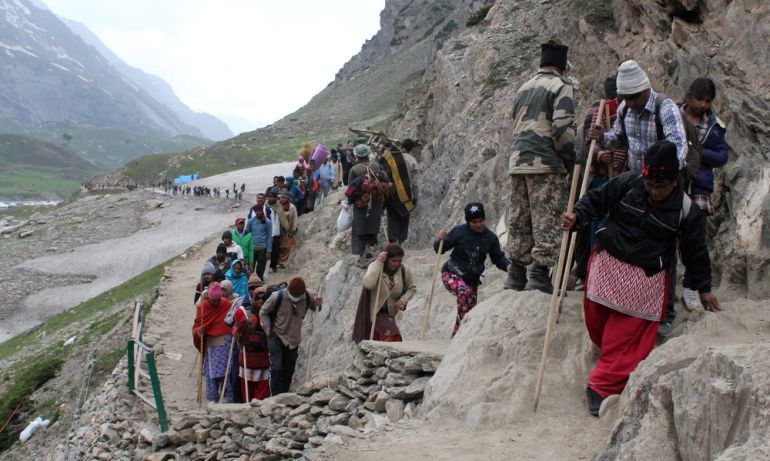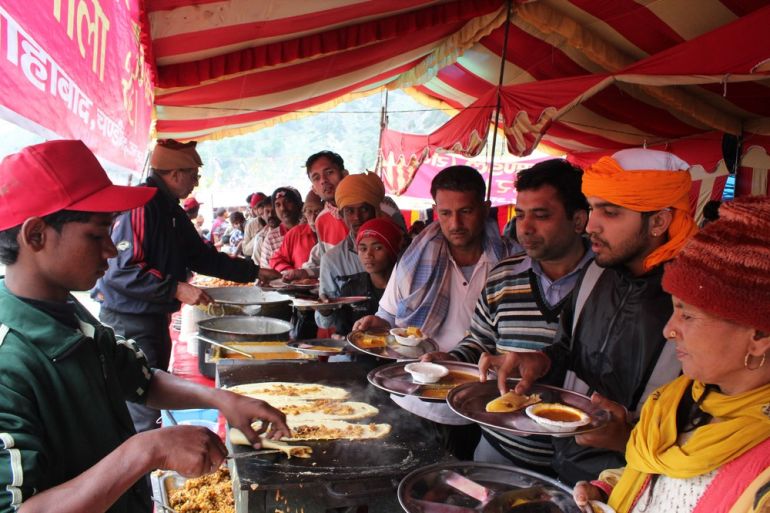In Pictures
Hindu pilgrims’ journey of faith in Kashmir
Hundreds of thousands of devotees climb to Amarnath Yatra cave each year, undertaking an arduous trek to pay obesiance.

Srinagar, Kashmir – Chanting bam bam bolay, hundreds of thousands of Hindu devotees throng to the beautiful valley of Pahalgam for their yearly pilgrimage known as the Amarnath Yatra.
Located amid the beautiful snowy mountains of the Eastern Himalaya in Indian-administered Kashmir, the Amarnath cave is a sacred shrine, highly revered by Hindus.
A two-month annual pilgrimage seasons sees devotees – or Yatris – walk and ride ponies or palanquins climb to the cave, located 3,800m (12,700ft) above sea level, some 140km (85 miles) from Srinagar city, the summer capital of Indian-administered Kashmir, to have glimpse of an ice stalagmite they believe to be a symbol of Hindu god, Lord Shiva.
| Click here for more on the Kashmir conflict |
The frozen column is said to grow and shrink “miraculously”, with the phases of the moon – reaching its maximum height during the summer.
The cave can be reached via two routes, each taking pilgrims through famous tourist destinations. One passes through Sonmarg, while the Pahalgam route is preferred by many Yatris. The Pahalgam path takes about two to three days to reach the cave, along a tough, mountainous route. Its steep gradient makes it very difficult to climb, yet elderly pilgrims still scramble up the rocky path.
The Yatra [journey] is a long trek, and pilgrims face a number of difficulties on the treacherous route. The scarcity of oxygen due to the high altitude has at times resulted in several cardiac arrests in recent years.
Pilgrims also have to endure abrupt climatic changes, as the weather can often swing wildly from sunshine to rain – and even snowfall amid the higher reaches of the mountains.
As a result, a number of pilgrims do not survive the journey.
The Yatra is special on many counts. The Hindu shrine is believed by many to have been re-discovered in the 15th century by a Kashmiri Muslim shepherd by the name of Buta Malik, and the annual event has come to represent the history of communal harmony between communities in the valley, even as Kashmir itself has fought for self-determination over past decades.
It is Kashmiri Muslims who make the arrangements for the pilgrims, and provide them with all facilities during the entire pilgrimage period. Kashmiri ponies, palanquins and helpers carry the pilgrims to the top – and in doing so risk their own lives.
The event is important for the livelihoods of so many Kashmiris struggling to make a living in the valley..
In 2012, around half a million pilgrims have registered for the pilgrimage – out of which some 250 000 Yatris have already paid obeisance at the shrine.











